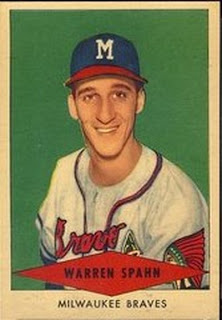Sy Berger didn’t invent baseball cards, but he pretty much invented the industry. In 1951, the WWII vet guided Topps out of the frontier, shifting the company’s focus from trading cards featuring American pioneers and cowboys to those spotlighting baseball players, making statistics and stale gum a staple of childhood and ultimately birthing a nostalgia market with Picasso-ish prices, Cubs valued like Cubists. Berger just passed away at 91. From his New York Times obituary by Richard Goldstein:
“Mr. Berger joined Topps in 1947 and was soon marketing cards featuring figures like Hopalong Cassidy and Davy Crockett before taking Topps into the baseball-card market in 1951.
Designing cards with the help of Woody Gelman, the creative director for Topps, Mr. Berger used photos the players had posed for during spring training — except for the 1953 set, with its images derived from oil paintings.
‘We had a guy doing those paintings a mile a minute,’ Mr. Berger once told Sports Collectors Digest. ‘A little off-the-wall guy named Moishe.’
When the boys of the 1950s reached adulthood, nostalgia merged with speculation to make baseball cards a commodity, bought and sold for prices inconceivable in their youth. Mickey Mantle’s 1952 Topps card was selling for about $3,000 in the early 1980s.
Most of the early Topps cards were presumably thrown out by mothers cleaning their sons’ closets, and Mr. Berger dumped dozens of cases of unsold 1952 cards into the Atlantic Ocean. But Topps and latter-day competitors were selling millions of baseball cards annually by the time of the pricing boom of the late 1980s and early ’90s.”



